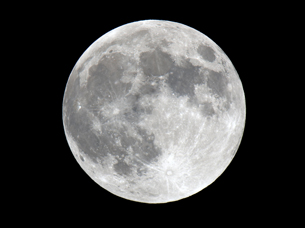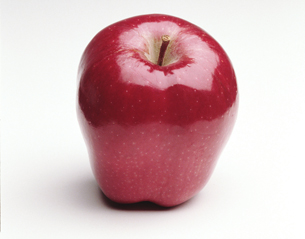Module 4—Gravitational Force

© Brad Thompson/shutterstock
 Reflect and Connect
Reflect and Connect
Is the Moon falling, just like an apple from a tree? Newton’s law of universal gravitation would have you believe just that, yet the motion of the Moon appears to contradict the definition of acceleration for a falling apple. Both the apple and the Moon are under the influence of the same gravitational field, yet they appear to move very differently. View the following two video clips to compare and contrast the motion of a falling apple with the motion of the Moon. (Note: You may be required to login with a username and a password. Contact your teacher for this information.)
View the first video clip titled Moon Orbit 1.
View the second video clip titled Moon Orbit 2. Half way through the clip, it's assumed that you know the formula for circular acceleration, ![]() . Don’t be confused by this; you will work with the formula in Module 5.
. Don’t be confused by this; you will work with the formula in Module 5.
Choose from one of the following activities to identify and explain the contradiction you have witnessed.
- Create a graphic representation of the contradiction with labels.
- Create a model of what is happening.
- Explain the contradiction through mathematics.
- Create a written scenario identifying what would need to change for the Moon to fall into Earth and the consequences if this were to happen.
When you are finished, place your work in your Physics 20 course folder and submit your response to your teacher for marks.
 Discuss
Discuss

© Photodisc/Getty Images
One day, so the story goes, Isaac Newton was under an apple tree reading a book when an apple fell and struck his head. Newton wondered what made the apple fall. Until Newton, many people believed that Earth and the heavens were governed by two totally dissimilar sets of laws or principles. But Newton, after observing a falling apple and the Moon, wondered if both the Moon and the apple were falling towards Earth. In other words, maybe a universal set of laws existed that would describe motion on Earth and in the heavens.
Humankind's journey to the Moon began with the work of Nicolaus Copernicus and was made possible by the discoveries of Newton. At the age of 22, Newton retreated to his family farm to escape the black plague. By consulting known data about the Moon's orbit and other variables, he developed a relationship that may be used to describe the force of attraction between any two bodies in the universe. Newton published these laws in 1687, in the book titled Mathematical Principles of Natural Philosophy. His work is one of the greatest scientific books ever published.
Here is an excerpt from his book:
“The same year I began to think of gravity extending to ye orb of the Moon, and . . . from Kepler's Rule (Kepler's third law) . . . I deduced that the forces which keep the Planets in their Orbs must (vary) reciprocally as the square of their distances from the centres about which they revolve: and thereby compared the force requisite to keep the Moon in her Orb with the force of gravity at the surface of the earth, and found them to answer pretty nearly. All this was in the two plague years of 1665 and 1666, for in those days I was in the prime of my age for invention, and minded Mathematicks and Philosophy more than at any time since.”
—Isaac Newton
Newton could not have developed his theory in isolation. Great scientific discoveries are made with the contributions of many individuals. Johannes Kepler is mentioned specifically. See an historical account of Newton’s discovery in Newton’s Perspective. It takes a long time to load, so be patient. (Note: You may be required to login with a username and a password. Contact your teacher for this information.)
Using the discussion forum, describe one of the following:
- the contributions of Kepler and Galileo
- how Newton used Kepler's and Galileo’s observations in a fundamentally new way
- why Newton’s law of universal gravitation was a significant step forward relative to the work of Kepler and Galileo
 Reflect on the Big Picture
Reflect on the Big Picture
Each of the Reflect on the Big Picture sections in this module will ask you to consider travel to, exploration of, or study of space. To help you consolidate your learning from this lesson, complete at least one of these reflection activities. You may choose to do one of these activities with a partner. If you work with a partner, be sure to add both your names to the reflections.
- Create an advertising campaign to sell the universal law of gravitation to a group of younger students or the general public. Choose your media—print, posters, audio, video, or computer multimedia—and sell, sell, sell!
- Imagine that you are a guest speaker in a Grade 9 science class and you have been asked to explain the way the law of universal gravitation affects the lives of the students. Prepare a short presentation that you might use. For example, satellite radio, TV, GPS, and the seasons might be included in your message. Your presentation can be in any form. You may choose to write a report, create diagrams, record the presentation, or use PowerPoint.
Store your completed reflection in your Physics 20 course folder.
 Module 4: Lesson 2 Assignment
Module 4: Lesson 2 Assignment
Remember to submit the Module 4: Lesson 2 Assignment to your teacher.